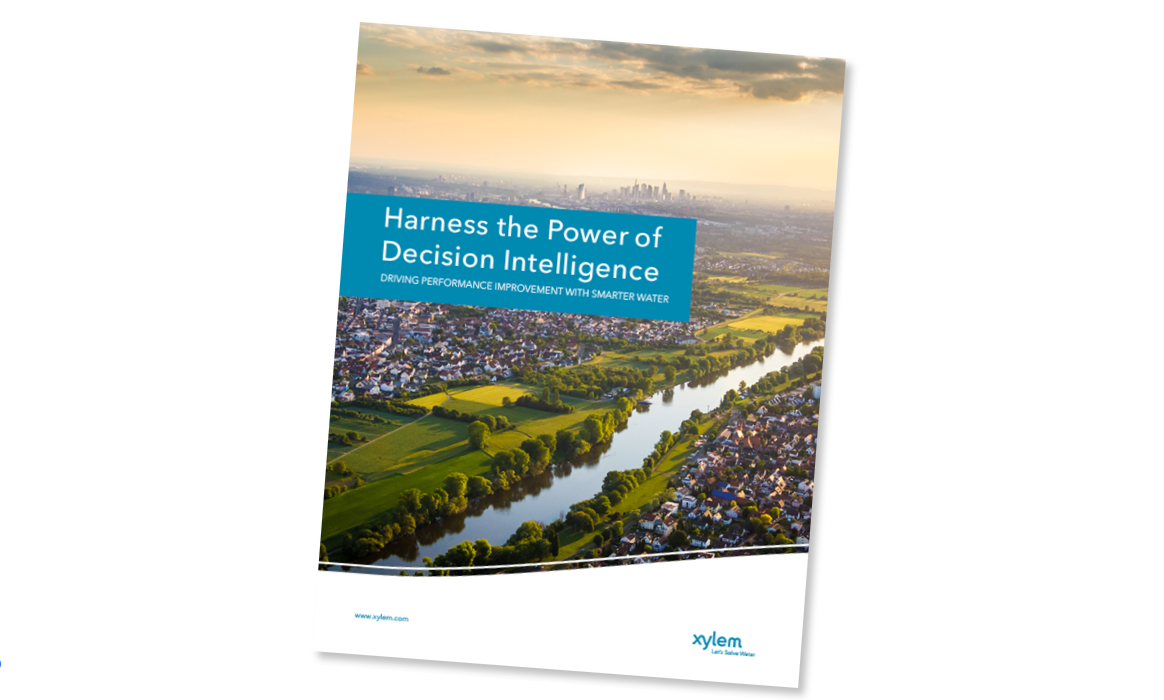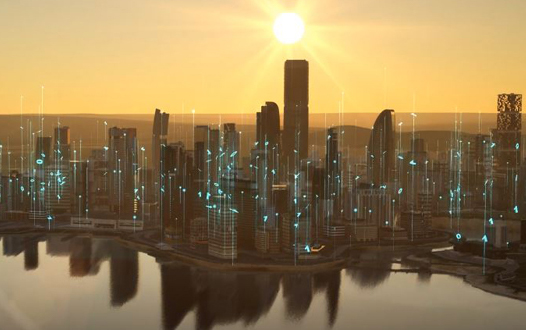Reinventing Drinking Water Systems through Data
“I wanted to test whether what I believed could impact human health and economic cost reduction with a company driving the digital transformation of water.”
Jim Uber, Director, Segment Area Leader, Drinking Water Network Optimization, and Founder of CitiLogics, charts his journey to becoming a water innovator and his work with Xylem to advance innovation in drinking water systems.
They say a great teacher can change your life, but for me it was a great class.
Growing up, I knew I wanted to be an engineer. But I really didn’t know what types of engineers there were. It was only when we had an introduction to environmental engineering at school that everything fell into place. We talked about having clean water, and how to get it to people, and I just thought it was completely fascinating. It changed my outlook and set me on a path to a career.
I was born in the 60s and grew up at a time when people were becoming more aware of the need to take better care of our resources: our land, our air and water. Even in grade school I was very interested in the environment. My mother saved lots of my drawings, things like the earth battling pollution in the boxing ring.
So when I took that class at school, suddenly everything came together. I knew I wanted to be an environmental engineer. I went to university in Illinois where I majored in environmental systems analysis, using software to model ways of reducing pollution in the most cost-effective way. That really appealed to me.
This led to a career as an academic, focused on optimizing the design of environmental systems. I was a professor at the University of Cincinnati from 1990 until 2016, when I helped launch CitiLogics, a start-up that pioneered a solution leveraging modelling and data analytics to help utilities predict and optimize water quality and energy use in large-scale urban water infrastructure systems. Essentially, it allows water operators to harness information from real-time data flowing into their systems to better understand how they can operate differently to save energy or improve water quality.
From Innovating on Campus to Joining Xylem’s Digital Team
So why did I shift gears and join Xylem? Well, I had loved my work at the University, but realised I wanted to take a different path. I wanted to test whether what I believed could positively impact human health, drinking water quality, economic cost reduction and so forth on a global scale, with a company driving the digital transformation of water.
In 2018, Xylem acquired CitiLogics to be a part of its pioneering Decision Intelligence digital solutions platform. Today, I help the company develop and promote the solution vision for network optimization at drinking water utilities, focusing on real-time operational decision support tools for operators and engineers that advance efficiency, quality and sustainability. We call this “Operational Wayfinding” – just like the apps we all rely on to get from points A to B in the fastest way, avoiding traffic jams and re-optimizing when we go “off-route,” Operational Wayfinding is a fully automated and real-time solution for network operators, helping them find the most efficient operational “route” to supply safe drinking water, adapting to changes in demand and infrastructure, and making adjustments for the necessary deviations from optimized guidance. And just like the wayfinding apps that have replaced paper maps, Operational Wayfinding lets network operators access an amazing suite of real-time predictive analytics technologies, in a way that suits their jobs and helps them address new efficiency and water quality performance goals.
There’s so many dimensions to each problem and the goal posts keep moving, but I’m super optimistic that between our digital solutions and our customers’ knowledge and commitment to their communities, we can solve any challenge.
Shaping the Future of Water
In the months and years ahead, our core mission won’t change –- maintaining and protecting public health and water quality from source to the tap is vital, as the COVID-19 pandemic has shown, and digital solutions play a critical role in making communities more resilient and sustainable. We’re focused on helping water operators harness advanced solutions to use less energy, cause less waste and drive down costs. That means more renewables, more smart thinking and more technology-driven efficiency.
As we look ahead, we can expect to see more automation, evolved sensors and greater control, and more miniaturization and more data-driven prediction, enabling better decisions: Decisions about capital infrastructure. Decisions that reduce water quality deterioration as it leaves the treatment plant. Decisions about pumping and valving that improve effectiveness while cutting energy costs.
The future’s going to be exciting - and I’m really glad to be part of it!


 James Uber, Ph.D., has taught and researched urban water infrastructure systems for 35 years, focusing on hydraulic and water quality modeling and operational optimization. His published work has received three National best paper awards, and he was presented with the ASCE Service to the Profession award in 2006, for development of tools to improve the design and operation of water distribution systems. In 2009 Jim became CEO of CitiLogics, a company he helped to form for the purpose of bringing real-time decision analytics tools to water industry practice. At Xylem, Jim is continuing to prove the value of operational optimization tools for integrating data, and managing water quality and energy in water distribution systems
James Uber, Ph.D., has taught and researched urban water infrastructure systems for 35 years, focusing on hydraulic and water quality modeling and operational optimization. His published work has received three National best paper awards, and he was presented with the ASCE Service to the Profession award in 2006, for development of tools to improve the design and operation of water distribution systems. In 2009 Jim became CEO of CitiLogics, a company he helped to form for the purpose of bringing real-time decision analytics tools to water industry practice. At Xylem, Jim is continuing to prove the value of operational optimization tools for integrating data, and managing water quality and energy in water distribution systems




